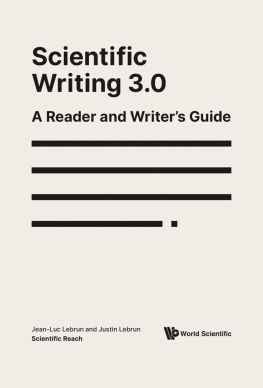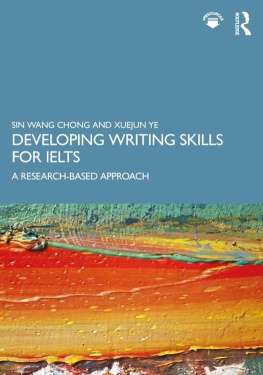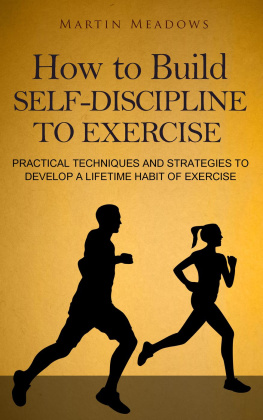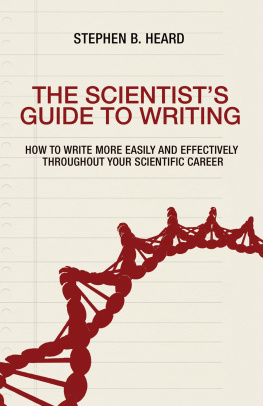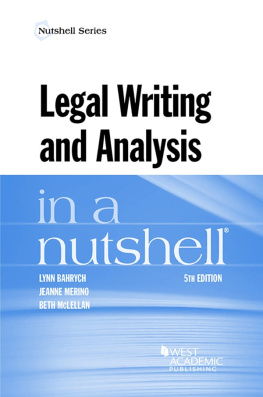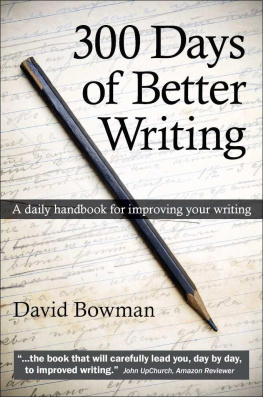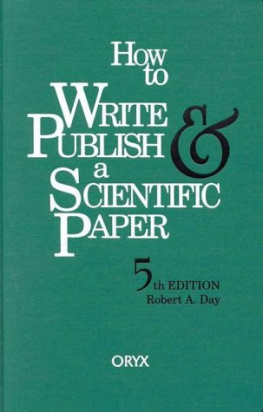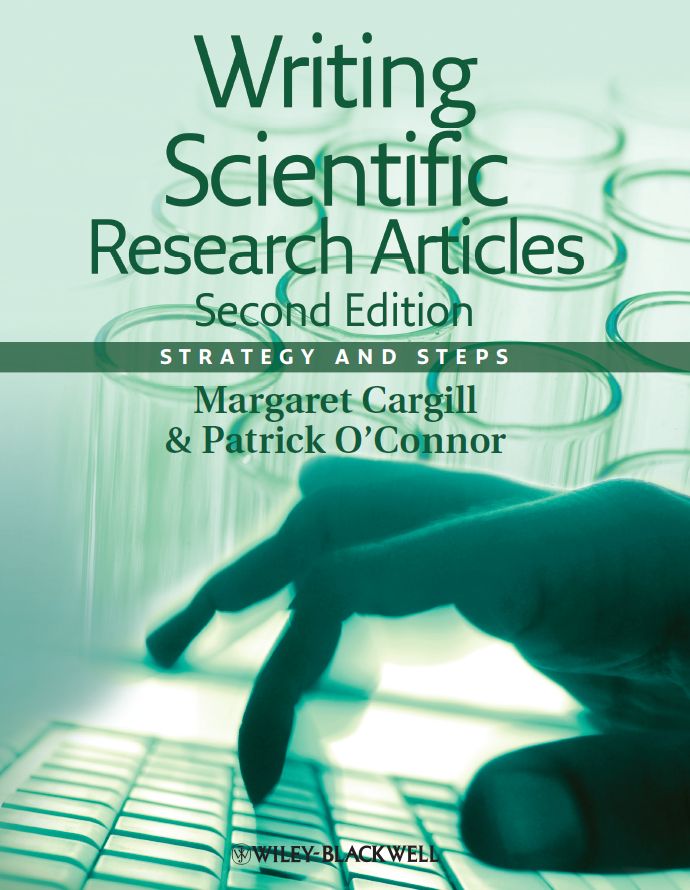

This edition first published 2013 2013 by Margaret Cargill and Patrick OConnor
Wiley-Blackwell is an imprint of John Wiley & Sons, formed by the merger of Wileys global Scientific, Technical and Medical business with Blackwell Publishing.
Registered Office
John Wiley & Sons, Ltd, The Atrium, Southern Gate, Chichester, West Sussex, PO19 8SQ, UK
Editorial Offices
9600 Garsington Road, Oxford, OX4 2DQ, UK
The Atrium, Southern Gate, Chichester, West Sussex, PO19 8SQ, UK
111 River Street, Hoboken, NJ 07030-5774, USA
For details of our global editorial offices, for customer services and for information about how to apply for permission to reuse the copyright material in this book please see our website at www.wiley.com/wiley-blackwell .
The right of the author to be identified as the author of this work has been asserted in accordance with the UK Copyright, Designs and Patents Act 1988.
All rights reserved. No part of this publication may be reproduced, stored in a retrieval system, or transmitted, in any form or by any means, electronic, mechanical, photocopying, recording or otherwise, except as permitted by the UK Copyright, Designs and Patents Act 1988, without the prior permission of the publisher.
Designations used by companies to distinguish their products are often claimed as trademarks. All brand names and product names used in this book are trade names, service marks, trademarks or registered trademarks of their respective owners. The publisher is not associated with any product or vendor mentioned in this book.
Limit of Liability/Disclaimer of Warranty: While the publisher and author have used their best efforts in preparing this book, they make no representations or warranties with the respect to the accuracy or completeness of the contents of this book and specifically disclaim any implied warranties of merchantability or fitness for a particular purpose. It is sold on the understanding that the publisher is not engaged in rendering professional services and neither the publisher nor the author shall be liable for damages arising herefrom. If professional advice or other expert assistance is required, the services of a competent professional should be sought.
Library of Congress Cataloging-in-Publication Data
Cargill, Margaret.
Writing scientific articles : strategy and steps / Margaret Cargill, Patrick OConnor.
Second edition.
pages cm
Includes bibliographical references and index.
ISBN 978-1-118-57069-2 (cloth) ISBN 978-1-118-57070-8 (pbk.) 1. Technical writing.
2. Research. 3. Science news. I. OConnor, Patrick, 1967 II. Title.
T11.C327 2013
808.0665dc23
2012046477
A catalogue record for this book is available from the British Library.
Wiley also publishes its books in a variety of electronic formats. Some content that appears in print may not be available in electronic books.
Cover design by Steve Thompson.
Preface to the second edition
The first edition of Writing Scientific Research Articles: Strategy and Steps has been taken up with enthusiasm worldwide, both by novice authors themselves and by those who help prepare them for the publishing component of a science career in the 21st century. This second edition incorporates suggestions from users, additional insights we have gained in teaching from the book, and several additional sections designed to extend the books approach to some topics not previously covered. Firstly, we have incorporated an additional article structure in Chapter 2 one frequently used in fields such as physics, computer science, and some types of engineering and an additional provided example article that uses it, from the field of remote sensing. These additions mean that the book now covers the full range of macro-structures commonly used in scientific research articles, extending its usefulness across a wider range of discipline areas.
The second addition is a chapter on the writing of review articles. Here, we apply the principles set out in the first edition to the challenge of writing a review article suitable for publication in an international journal. We suggest that most of the advice remains completely applicable if the term data is re-conceived as the authors evaluations of the work being reviewed, and the articles take-home message is new synthesis or conclusions that advance understanding of the field in question.
We take a similar approach for the third new feature, one that has been requested by many readers a chapter on the writing of applications for grant funding. Although the specific requirements of funding bodies differ, the underlying process of understanding and responding effectively to a set of criteria remains the same. We have focused on applying the principles from the rest of the book to provide guidelines and strategies that will be relevant in contexts ranging from small grants for travel or conference attendance all the way to large national or international funding opportunities.
Once again we express our thanks to colleagues who have contributed to the developments included in the second edition, especially Holly Slater, Andrew Smith, John Harris, Peter Langridge, Matt Gilliham, and Michelle Picard, and to our editors at Wiley-Blackwell, Ward Cooper, Carys Williams, and Kelvin Matthews. We also thank the many users of the first edition whose ideas and questions have spurred us on. As before, any remaining problems are our own.
Margaret Cargill
Patrick OConnor
September 2012
Preface to the first edition
Writing Scientific Research Articles is designed for early-career researchers in the sciences: those who are relatively new to the task of writing their research results as a manuscript for submission to an international refereed journal, and those who want to develop their skills for doing this more efficiently and successfully. All scientists are faced with pressure to publish their results in prestigious journals and all face challenges when trying to write and publish. This book takes a practical approach to developing scientists skills in three key areas necessary for success:
- developing strategy: understanding what editors and referees want to publish,and why;
- developing story: understanding what makes a compelling research article in aparticular discipline area; and
- using language: developing techniques to enhance clear and effective communicationwith readers in English.
The skills required for successful science writing are both science- and languagebased, and skill integration is required for efficient outcomes. We are an author team of a scientist and a research communication teacher who have combined ourperspectives and experience to produce an integrated, multidisciplinary approach tothe task of article writing.
We have written the book both for those who write science in English as their first language and those for whom English is an additional language (EAL). Although a very high proportion of the research articles published worldwide currently appears in English, scientific research is an intensely international and intercultural activity in the twenty-first century, and authors come from a wide range of language and cultural backgrounds. This situation adds another layer to the challenges facing authors themselves, journal editors and referees, and those who teach and support EAL scientists. We hope the book will be relevant to all professionals involved with the practice of research article writing.
Next page

